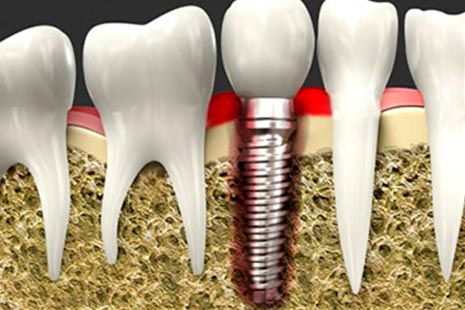How to Treat Infection under Dental Bridge: Expert Solutions

To treat an infection under a dental bridge, it is important to seek immediate dental attention. Your dentist will determine the best course of action, which may involve tooth extraction, root canal treatment, dental filling, and antibiotics.
In some cases, the bridge may need to be replaced.
Understanding Infection Under Dental Bridge
Infection under a dental bridge is a serious issue that requires immediate attention. Treatment options may include tooth extraction, root canal, dental filling, antibiotics, or replacing the bridge. It’s important to visit your dentist for proper diagnosis and treatment.
|
Causes and Symptoms of Infection
The teeth below a dental bridge become most at risk for infection via tooth decay or gum disease when a patient has poor oral hygiene, consumes a poor diet that is particularly high in sugars or processed foods, or when effective cleaning becomes more difficult to do due to the bridge being ill-fitted. It is important to be aware of the symptoms of infection under a dental bridge, which include pain, swelling, redness, and bad breath. Risk Factors for Infection There are several risk factors that can increase the likelihood of developing an infection under a dental bridge. These include poor oral hygiene, a diet high in sugary foods, ill-fitting bridges, tooth decay, and gum disease. It is important to address these risk factors to prevent infection and maintain the overall health of the teeth and gums. Importance of Early Treatment If you suspect an infection under your dental bridge, it is crucial to seek early treatment. Delaying treatment can lead to further complications and damage to the teeth and gums. Your dentist may recommend treatments such as tooth extraction, root canal therapy, dental filling, or bridge replacement, along with antibiotics to effectively treat the infection. Additionally, practicing good oral hygiene, maintaining a healthy diet, and scheduling regular dental check-ups can help prevent the recurrence of infection under a dental bridge. |

Credit: ocperioandimplants.com
Treating Infection Under Dental Bridge
Infections under dental bridges can be a serious issue, requiring immediate attention from a dentist. Treatment options may include tooth extraction, root canal, dental filling, and antibiotics. In some cases, replacing the bridge may be necessary.
Dental Procedures For Infection Treatment
| Root Canal Therapy | Tooth Extraction | Dental Filling |
|---|---|---|
| If the infection has affected the dental pulp, a root canal procedure may be performed to remove it. | In some cases, tooth extraction may be necessary to treat the infection. | Dental filling can be done to repair any decayed or damaged tooth and eliminate infection. |
Use Of Antibiotics In Infection Treatment
| Types of Antibiotics Used | Proper Usage and Dosage |
|---|---|
| Common antibiotics like amoxicillin or penicillin are often prescribed to treat dental infections. | It is important to follow the prescribed dosage and complete the full course of antibiotics to effectively eradicate the infection. |
Replacing The Dental Bridge
| When Bridge Replacement is Necessary | Procedure and Considerations |
|---|---|
| If the infection cannot be effectively treated, replacing the dental bridge may be the only option. | Bridge replacement involves removing the infected bridge and providing appropriate dental restoration to maintain oral health. |
Preventing Infection Under Dental Bridge
It is essential to take immediate action if you suspect an infection under your dental bridge. Seeking dental treatment as soon as possible is recommended, as you may require a tooth extraction, root canal, dental filling, or antibiotics to treat the infection effectively. In some cases, replacing the bridge may be necessary. To prevent infections under dental bridges and maintain good oral hygiene, follow these steps:
- Brush your teeth using proper techniques for at least two minutes, twice a day.
- Floss between your teeth and around the bridge to remove plaque and food particles.
- Rinse your mouth with an ADA-approved mouthwash to eliminate any leftover debris.
- Visit your dentist regularly for check-ups and professional cleanings.
- Make diet and lifestyle changes to promote oral health, such as reducing sugar consumption and avoiding tobacco.
If you notice any symptoms of infection, such as pain, swelling, or an unpleasant taste, contact your dentist immediately to address the issue and prevent further complications.
Frequently Asked Questions On How To Treat Infection Under Dental Bridge
What Causes Infection Under A Bridge?
The most common causes of infection under a dental bridge are poor oral hygiene, tooth decay, and gum disease. If the bridge is ill-fitted or not cleaned properly, food particles can get trapped and lead to infection. It is important to see a dentist as soon as possible for treatment, which may include tooth extraction, root canal, dental filling, or bridge replacement.
What Infection Can You Get Under A New Bridge?
If you have a new bridge, you can develop an infection. It’s crucial to see your dentist as soon as possible. You might need a tooth extraction, root canal, dental filling, or antibiotics to treat the infection. In some cases, replacing the bridge may be the only solution.
Can Food Stuck Under A Bridge Cause An Infection?
If food gets stuck under a bridge, it can cause an infection if not cleaned properly. It is important to brush regularly to remove trapped food particles and prevent infection.
Why Is My Gum Swollen Under My Bridge?
Ur dental bridge to remove any trapped food or bacteria. It is important to see your dentist for an evaluation and appropriate treatment.
Conclusion
Taking care of an infection under a dental bridge is crucial for your oral health. It is important to seek professional help from your dentist as soon as possible. Treatment options may include tooth extraction, root canal, dental filling, or antibiotics.
In some cases, replacing the bridge may be necessary. Remember, maintaining good oral hygiene is essential in preventing infections and complications. Take care of your dental bridge and prioritize your oral health for a brighter smile.





